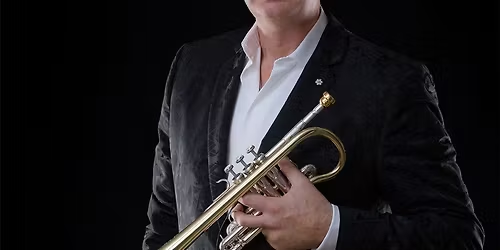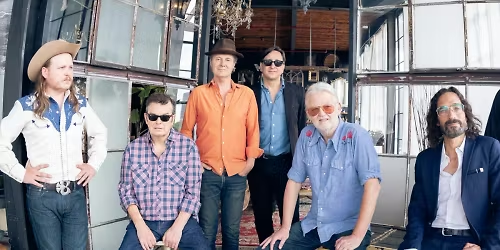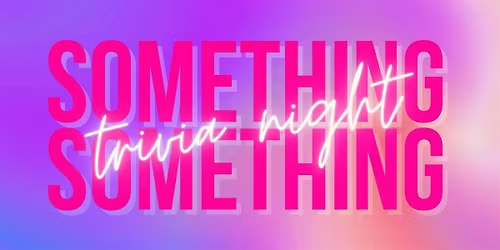FOUR CENTURIES | Berlin Montréal TO
Schedule
Fri Jan 23 2026 at 07:30 pm to 09:30 pm
UTC-05:00Location
Trinity-St. Paul's United Church and Centre for Faith, Justice and the Arts | Toronto, ON

About this Event
Friday, January 23, 2026, 7:30 pm, Trinity-St. Paul's Centre, 427 Bloor St. West
FOUR CENTURIES | Berlin Montréal TO
Berlin Philharmonic oboist Christoph Hartmann makes his Canadian debut, stellar Montreal cellist Noémie Raymond plays a beloved concerto, and we spotlight two great Toronto composers
SINFONIA TORONTO / NURHAN ARMAN Conductor
CHRISTOPH HARTMANN Oboist / NOÉMIE RAYMOND Cellist
Program
MOZART Divertimento K 136
NORBERT PALEJ Oboe Concerto world premiere
BACH Oboe Concerto in D Minor
DAVID JAEGER Fantasia ‘Conjure You’ world premiere
SAINT-SAENS Cello Concerto No.1 in A minor Op.33
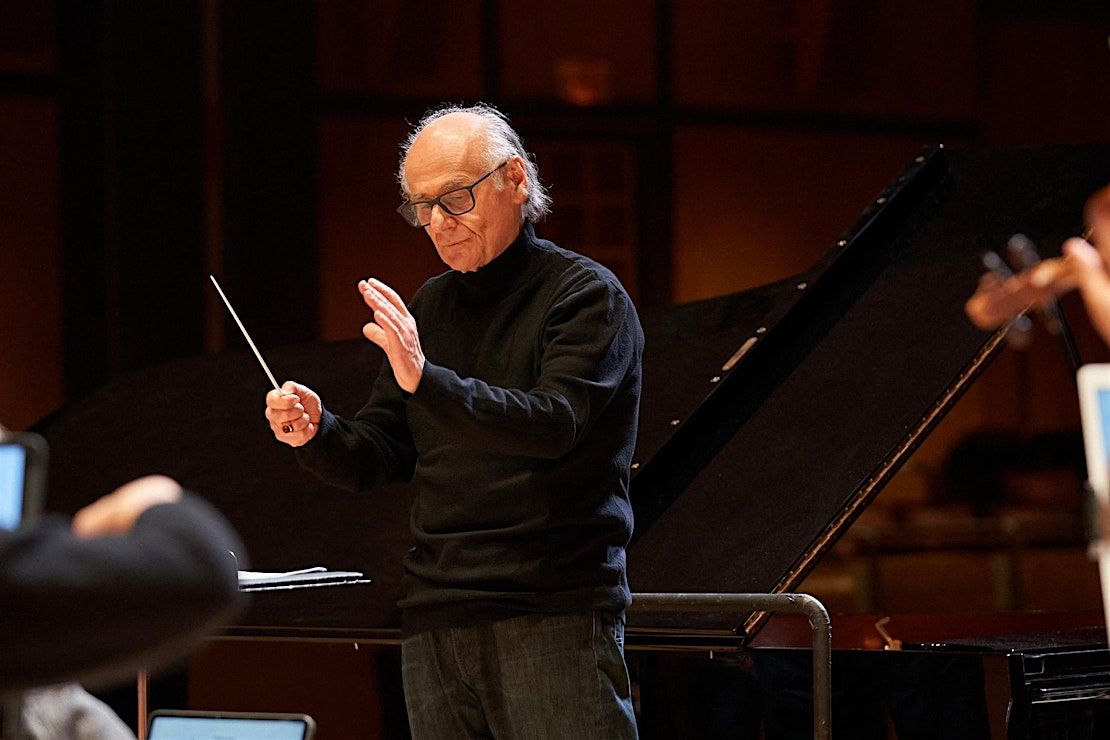
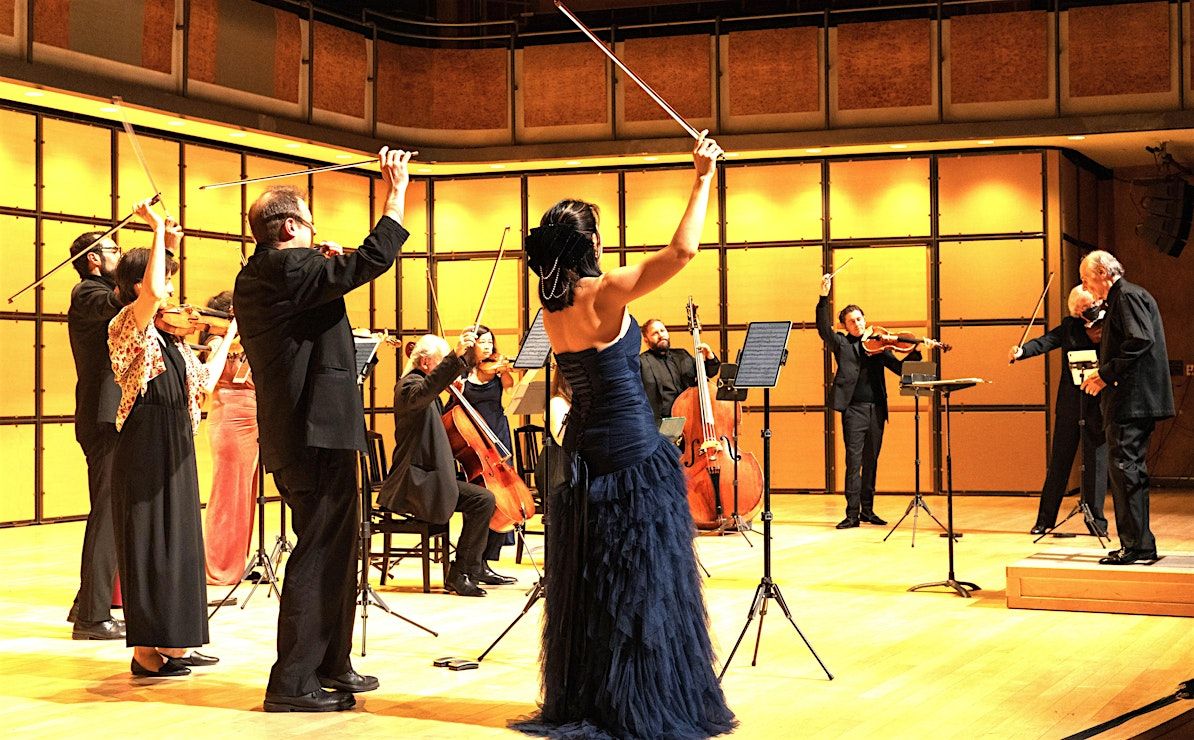
PERFORMER BIOGRAPHIES
Oboist Christoph Hartmann - “Live your dreams!” this is the belief of the Berlin Philharmonic oboist Christoph Hartmann. The native-born Bavarian devotes himself with enthusiasm, dedication and joy to things that inspire him.
The parents who brought up Christoph Hartmann in Landsberg am Lech, knew how to support his hobbies – music making, running and cycling. That he would choose the oboe as a professional career was pure coincidence, largely due to the local music school wanting to establish an oboe class. Trying the instrument once but it was enough to become his passion. He studied with Georg Fischer at the Conservatory Augsburg and then with Günther Passin in Munich, and began working as a solo-oboist even before completing his studies. In 1991 he became solo-obist with the Stuttgart Philharmonic and within the next year he moved to the famous Berlin Philharmonic.
From that time on Hartmann enjoyed a full musical life, playing in orchestral and chamber music concerts, teaching at the Herbert-von-Karajan-Academy, travelling as a soloist, conducting master classes and researching repertoire for his instrument in archives and libraries.
At the point where most of his colleagues finish their day, Hartmann’s second life begins: sport. He regularly runs marathons, is a co-partner of the bike shop “Bikeline” in Berlin-Friedenau and has also developed his own bicycle brand: Pasculli, named for the Italian oboe virtuoso Antonio Pasculli, whose manuscripts were found by Hartmann in an Italian library, prompting him to bring the forgotten music to blossom. Pasculli’s operatic phrases, featured on Hartmann’s CD “Fantasia Italiana” have been received with critical and public acclaim after the world premiere CD was released by EMI.
Following his love for chamber music, Hartmann has invited colleagues to his hometown since 1991 to participate in the small but exclusive festival he founded, Landsberger Sommermusiken,. The concept of making music on a professional level but in a relaxed atmosphere has induced musicians to return to the festival for the past ten years. Out of this has grown a consistent ensemble, the Ensemble Berlin, which now tours internationally and can be heard playing with Hartmann on his CD ‘Bella Napoli’. He has collaborated with the Ensemble Berlin on additional recordings including the CD,s Virtuoso, Le tombeau de Couperin and Clair de Lune.
Cellist Noémie Raymond - Destined to “leave her mark on posterity through her immense sensitivity and immeasurable talent” (Journal des Citoyens), cellist Noémie Raymond-Friset enjoys a diversified international career that has led her to perform as a chamber musician and soloist with renowned orchestras. From London’s Royal Albert Hall to the Festival Internacional de Musica de Camara in Lima, her “passionate, hypersensitive and refined” playing has taken her to four continents, including performances with violinists Midori Goto and Pinchas Zukerman.
Recognized as one of the “30 Hot Canadian Classical Musicians under 30” by CBC, Noémie is also an accomplished and experienced educator. Holder of a Doctorate in performance and literature from the prestigious Eastman School of Music, she is a cello and chamber music mentor for the Heifetz International Music Institute’s junior program and teaches at the Festival del Lago in Mexico.
She has won several prizes in national and international competitions. She has also distinguished herself as a scholarship recipient on several occasions and as a laureate of the Canada Council for the Arts Musical Instrument Bank competition.
Noémie plays the beautiful Matteo Goffriller “Ex-Curtis” cello (1700) generously on loan to her by Canimex Inc. of Drummondville, Québec.
Sinfonia Toronto now in its 27th season, has toured twice in Europe, in the US, South America and China, receiving glowing reviews. It has released six CD’s, including a JUNO Award winner, and performs in many Ontario cities. Its extensive repertoire includes all the major string orchestra works of the 18th through 21st centuries, and it has premiered many new works. Under the baton of Nurhan Arman the orchestra’s performances present outstanding international guest artists and prominent Canadian musicians.
Maestro Nurhan Arman has conducted throughout Europe, Asia, South America, Canada and the US, returning regularly to many orchestras in Europe. Among the orchestras Maestro Arman has conducted are the Moscow Philharmonic, Deutsches Kammerorchester Frankfurt, Filarmonica Italiana, Orchestra Sinfonico di Roma, St. Petersburg State Hermitage Orchestra, Orchestre Regional d’Ile de France, Hungarian Symphony, Arpeggione Kammerorchester, Milano Classica and Belgrade Philharmonic.
PROGRAM NOTES
Divertimento K 136 in D Major by Wolfgang Amadeus Mozart (1756-1791)
Mozart was only sixteen in 1772 when he composed his Divertimento in D Major, K. 136, just after returning from a concert tour of Italy with his father. Young Wolfgang was already an accomplished virtuoso performer, and his set of three Divertimenti K. 136-138, also known affectionately as the “Salzburg Symphonies,” show creative finesse far beyond his years.
Scholars are not sure whether Mozart called this delightful work and its two companions divertimentos, in view of the fact that works identified that way in Mozart’s time normally possessed more than the three movements in this group. However during the 18th Century the terms divertimento, serenade, notturno and cassation were all used rather loosely, and a work such as this might be given any one of these titles, all meant to indicate a light diversion for an evening at court.
Oboe Concerto in D Minor, BWV 1059 by Johann Sebastian Bach (1685-1750)
Bach’s Oboe Concerto in D Minor is a work reconstructed from parts of other works – from a fragment of Bach’s Harpsichord Concerto in D Minor, BWV 1059, and themes found in his Cantatas 35 and 156. That is because the original manuscript was lost. We also have no way of knowing if Bach composed this concerto for the oboe, though we are certain it was composed during his time in Köthen (1717–1723) or early in his Leipzig years (1723–1750).
In Köthen, Bach focused almost exclusively on instrumental music and composed many concertos. It was only after moving to Leipzig that his focus shifted to sacred vocal music. Some of his earlier instrumental works were later adapted for different instruments, transforming oboe and violin concertos into harpsichord concertos. The Harpsichord Concerto in D Minor, which survives as a fragment of only nine measures, likely served as the basis for the lost Oboe Concerto in D Minor. By analyzing related cantata movements and the overall style, scholars have rebuilt what they believe to be the original work.
The concerto we hear tonight is in D minor and consists of three movements, following the typical fast-slow-fast Baroque structure. The Allegro first movement is lively and rhythmic, with the oboe and strings engaging in an energetic dialogue in ritornello form, where the orchestra plays the main theme, then is interrupted by virtuosic solo passages as the oboe provides ornamented melodies and complex counterpoint. The Adagio second movement is slow, lyrical, and emotionally intense. It has an aria-like quality, with the oboe playing a long, flowing melody over a simple but expressive accompaniment. The harmonies are chromatic, adding depth to the emotional tone of the movement. The Allegro last movement is lively and dance-like, with rhythmic buoyancy and energetic exchanges between the soloist and orchestra. Like the first movement, it follows a ritornello form but requires even more virtuosity from the oboe.
Modern oboists consider this a key work in the Baroque repertoire, alongside Bach’s other oboe concertos such as the Concerto in F Major, BWV 1053. This one stands out as an excellent example of Bach’s talent for writing for the oboe, showcasing both its lyrical and virtuosic qualities.
Oboe Concerto ‘MENE MENE’ by Norbert Palej (1977 - ) World premiere
Notes from the composer:
“In the same hour came forth fingers of a man’s hand, and wrote over against the candlestick upon the plaister of the wall of the king’s palace: and the king saw the part of the hand that wrote.” (Daniel 5:5 KJV)
“And this is the writing that was written, MENE, MENE, TEKEL, UPHARSIN. This is the interpretation of the thing:
MENE; God hath numbered thy kingdom, and finished it.
TEKEL; Thou art weighed in the balances, and art found wanting.
PERES; Thy kingdom is divided, and given to the Medes and Persians.”
Daniel (5:25–28 KJV)
This prophecy resonates across all ages - not only in Belshazzar’s time, and not only as a political warning, but as a spiritual one. These word-keys carry reality-altering force. Perhaps music - being, at its core, a medium of in-cantation - is uniquely suited to approach the mystery of the four words.
Fantasia Conjure You for Cello and Orchestra by David Jaeger (1947- ) world premiere
Notes from the composer:
Fantasia Conjure You has its origins at a Sinfonia Toronto concert. My friend and collaborator, the wonderful cellist Noémie Raymond and I were enjoying a performance two seasons ago, when the idea sprang up in both our minds: why not compose a work for Noémie's cello and Sinfonia Toronto! She had already recorded her marvelous interpretation of my unaccompanied cello work, Constable's Clouds. The next step in our creative relationship seemed to point to something larger.
In the meantime, I had begun setting the remarkably musical poetry of the Scottish author, David Cameron, for various voices and instruments. One of the melodies I had created was a setting of Cameron's poem, Conjure You. This is a short poem whose message is the conjuring of the artist's Muse. I decided this would be a perfect source for the work for Noémie, and set out to compose variations on the original melody. The result is the current Fantasia. The work is dedicated to Noémie Raymond and to Maestro Nurhan Arman.
Cello Concerto No. 1 in A minor, Op.33 by Camille Saint-Saëns (1835-1921)
Chamber version by Jacub Kowalewski
Saint-Saëns was one of music’s greatest prodigies. He wrote his first piece when he was three; at four he played the piano part of a Beethoven violin-piano sonata at a private concert; and he made his public début at 10, playing piano concertos by Mozart and Beethoven ion the Salle Pleyel in Paris. For an encore at the début he offered to play, from memory, any Beethoven sonata the audience wanted. At thirteen he entered the Paris Conservatory, where he became a star pupil. Hector Berlioz quipped that “he knows everything, but lacks inexperience.”
Saint-Saëns was not exploited as a child prodigy like Mozart; his mother made sure he received a well-rounded education. His published works include books and articles on botany, Roman drama and the history of the postage stamp.
His musical interests were also diverse. He promoted the works of Bach, Handel and Gluck at a time when there was not much attention to music from earlier periods, influencing Berlioz’s interest in Bach. He defended new music, especially that of Liszt and Wagner. In his later years, his enthusiasm for moder music decreased. Although he outlived both Mahler and Debussy, he disliked their music.
Saint-Saëns composed this concerto in 1872 for the Belgian cellist, viola de gamba player and instrument-maker Auguste Tolbecque. Tolbecque was part of a distinguished family of musicians closely associated with the Société des Concerts du Conservatoire, France’s leading concert society. In 1872 Saint-Saëns was still a controversial figure in conservative French musical circles. He was viewed as too modern, and insufficiently respectful of French musical tradition; within the tense European political climate, he was regarded with suspicion as a “prophet of Wagner.” But Tolbecque premiered the concerto on January 19, 1873 at a Paris Conservatoire concert, and the inclusion of the new work in a Conservatoire program signaled Saint-Saëns' growing acceptance by the French musical establishment.
Saint-Saëns’ own artistry and virtuosity – Berlioz called him “an absolutely shattering master pianist” – inspired him to write concertos with both musical depth and exciting displays of technique. This concerto reflects Liszt’s adventurous experiments: it melds three movements into one, transforms its opening material onward throughout the entire work, and gives the middle movement a dual role as both a slow movement but also a scherzo.
The soloist dominates from the first measure. Saint-Saëns ensures that the cello line is never overbalanced by the orchestra, a frequent problem in writing for lower-register solo instruments or voice. He found it such a strain to achieve the clarity he wanted in this concerto that he said he would never write another cello concerto. But he love the cello. The noble Swan section of his Carnival of the Animals may be the instrument’s single most famous piece, and thirty years later he did compose a second cello concerto.
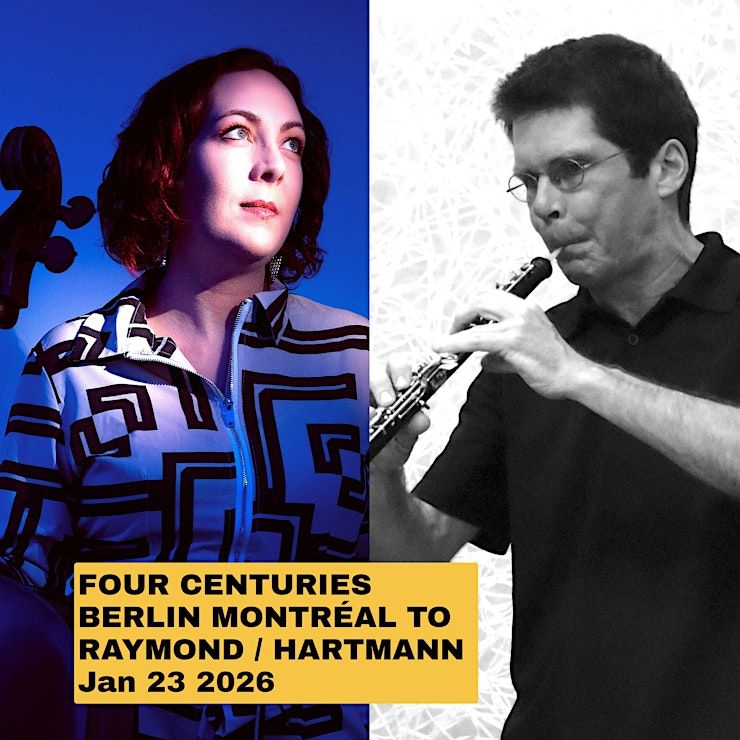
Where is it happening?
Trinity-St. Paul's United Church and Centre for Faith, Justice and the Arts, 427 Bloor Street West, Toronto, CanadaEvent Location & Nearby Stays:
CAD 25.57 to CAD 54.76

